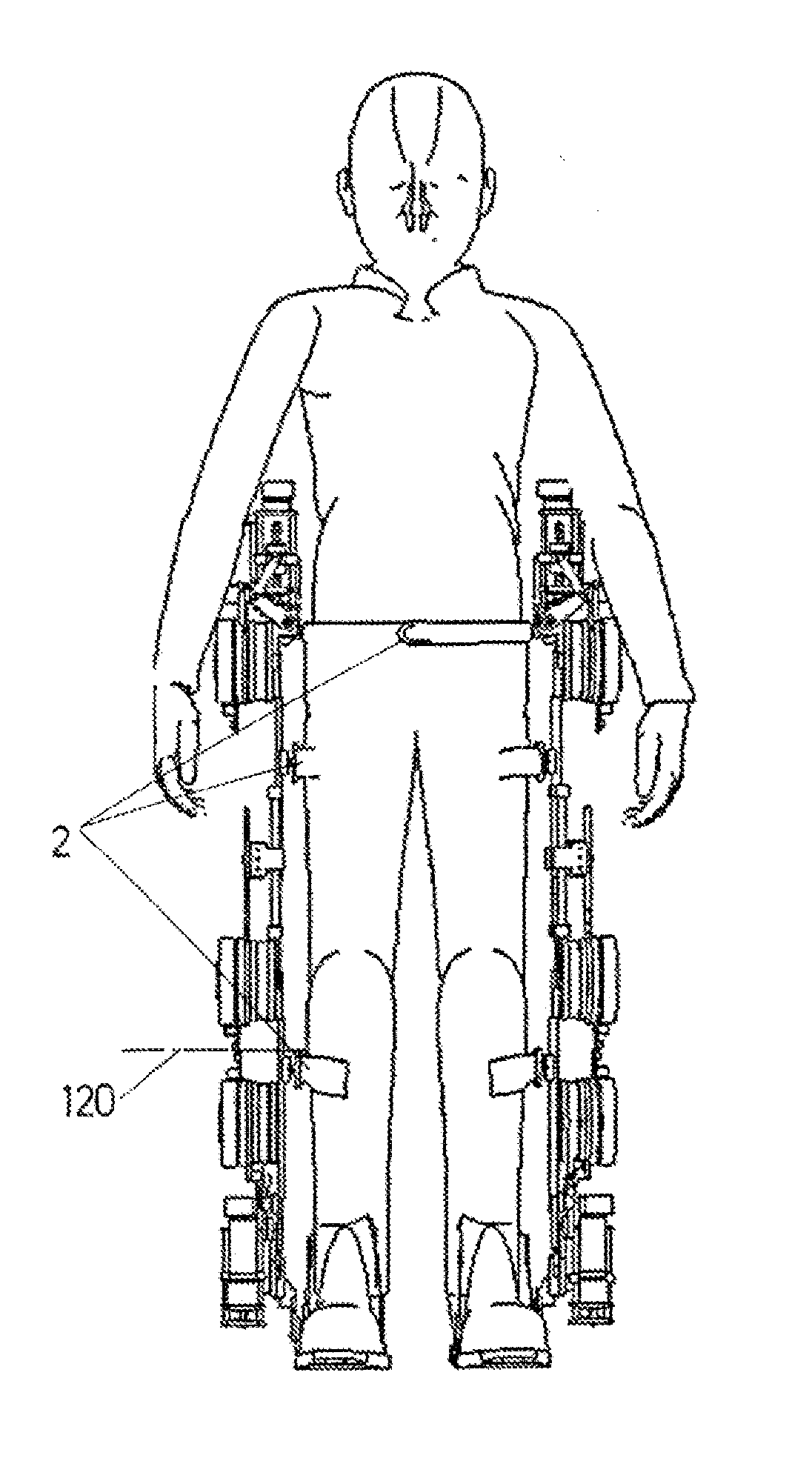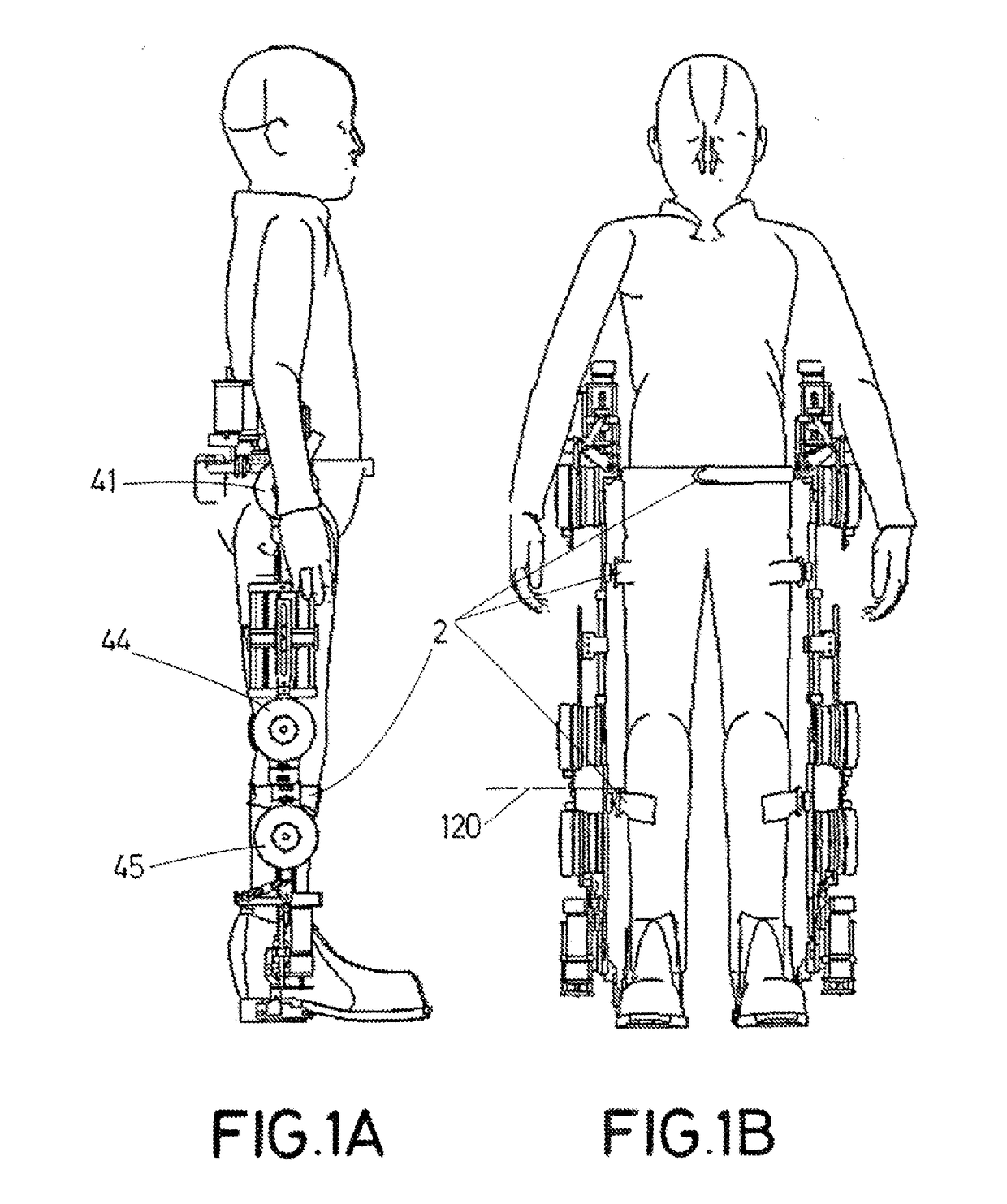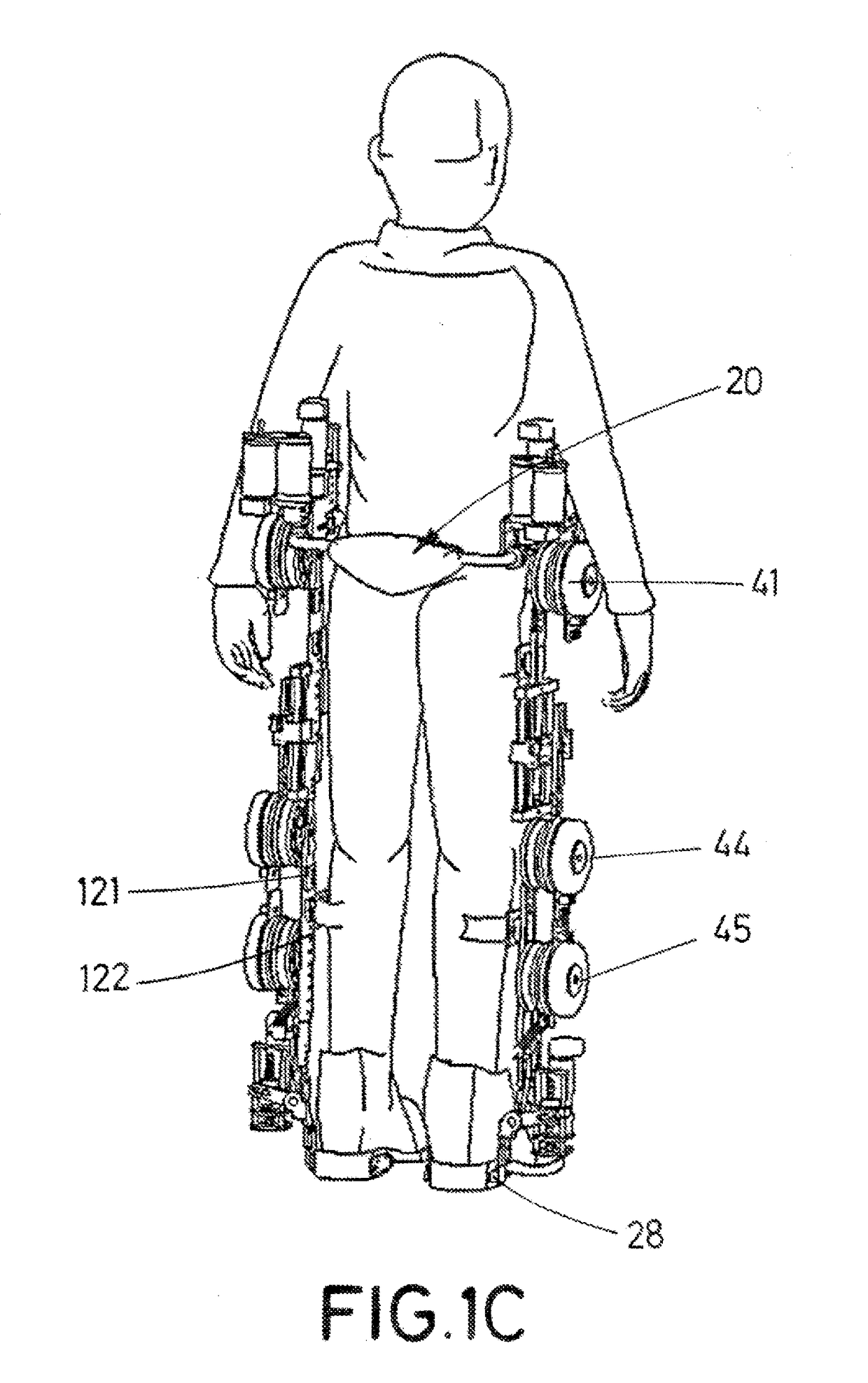The disruption in mobility affects functional independence to carry out every day activities and negatively affects various basic physiological functions causing, among others, urinary and
fecal incontinence,
sexual dysfunction and cardiovascular problems.
This group of factors has an effect on the self-esteem of the person and causes severe psychological problems.
The mechanical structure is usually custom-made to fit a patient and lacks the flexibility to be used in other patients or even in the same user when the
disease has evolved significantly.
The
energy source necessary to feed the motors and the electronic gear must be included
on board and are usually located in the back of the device, which tends to be an obstacle for sitting or
lying down with the exoskeleton, in addition to significantly hindering the recharging or replacement of the batteries.
One of the main technological challenges facing wearable exoskeletons is finding a compromise between a lightweight and compact structure that facilitates handling by a user, who usually has muscular
weakness, and on the other hand a robotic
system that implements a physiologically complete
biomechanical model.
The second is accomplished by increasing the number of degrees of movement of the robotic structure, in order to make it resemble the human
biomechanical model, but the weight and volume that the actuators and transmission systems impose on the structure multiply with the number of active joints and the result is a mechanical structure that is too heavy to be functional.
Generating other kinds of movements may ultimately be harmful for the neuromuscular
system.
Without it, the
gait loses its
natural energy balance and also the ability to maintain the anteroposterior equilibrium of the body.
U.S. Pat. No. 7,153,242B2 describes a
lower limb exoskeleton made up of rigid segments and braces, joined by two rotational joints in each leg, one in the hip and another in the knee, that are controlled by linear or rotational actuators, generating movement solely in the
sagittal plane and conferring a mobility of
two degrees of freedom for each leg, which does not allow lateral movements or stabilization of the equilibrium of the user during
gait.
The option of passively activating the
ankle has negative effects on
gait generation, since it prevents any motor capacity in the
ankle in the impulse prior to the foot transfer phase.
This restricts its use to patients with
muscle strength in the arms and lateral mobility in the
trunk.
The movement is commanded by means of thoracic movements in the sagittal plane of the user, reason for which its use is also limited to patients with this capacity of movement.
Even so, the lack of actuated
degrees of freedom results in an insufficient gait from a medical point of view, since it restricts controlled movement in the sagittal plane, prevents
equilibrium control, and therefore requires additional sustaining elements such as canes, and cancels out the energy contribution of the
ankle joint in the impulse prior to the foot transfer phase.
The batteries are placed in the rear portion of the exoskeleton, remaining at around
kidney height, which, even though they are replaceable, hinders this operation for the user.
Despite this characteristic, this design lacks
hip rotation, fundamental for imposing the trajectory of the pressure center in the sole of the foot corresponding to a healthy gait.
Even though it is the only exoskeleton with the ability to control the stability or equilibrium of the patient, the
disadvantage of this exoskeleton is its
low speed, failing to reach gait speeds above 0.05 m / s, which makes it not very useful.
All of these devices require an excessive prior fitting by specialized staff, both of the mechanical structure that must be perfectly coupled to the user, and of the
movement control methods, which are based on monitoring of specific
reference patterns for a patient.
This lack of flexibility in the designs and
movement control methods greatly hinders the widespread use of exoskeletons.
On the one hand, custom-made manufacturing makes
mass production impossible and consequently prevents lowering of costs of the final product in order to reach the user.
Both anti-physiological effects can cause damage during gait and therefore medical specialists discourage the use of the pelvic harness for gait.
This prevents autonomy and independence of the user in their daily use.
Therefore, it is not possible to place the exoskeleton from the anterior to the posterior position since the
lumbar reinforcement and the braces get in the way.
None of the devices known in the state of the art fulfill this anatomical function, having cervical angles of 90° and condylar angles of 0°, which in no case correspond to a physiological gait and therefore generate an abnormal gait in patients without anomalies and they may not be used in patients with anomalies.
 Login to View More
Login to View More  Login to View More
Login to View More 


